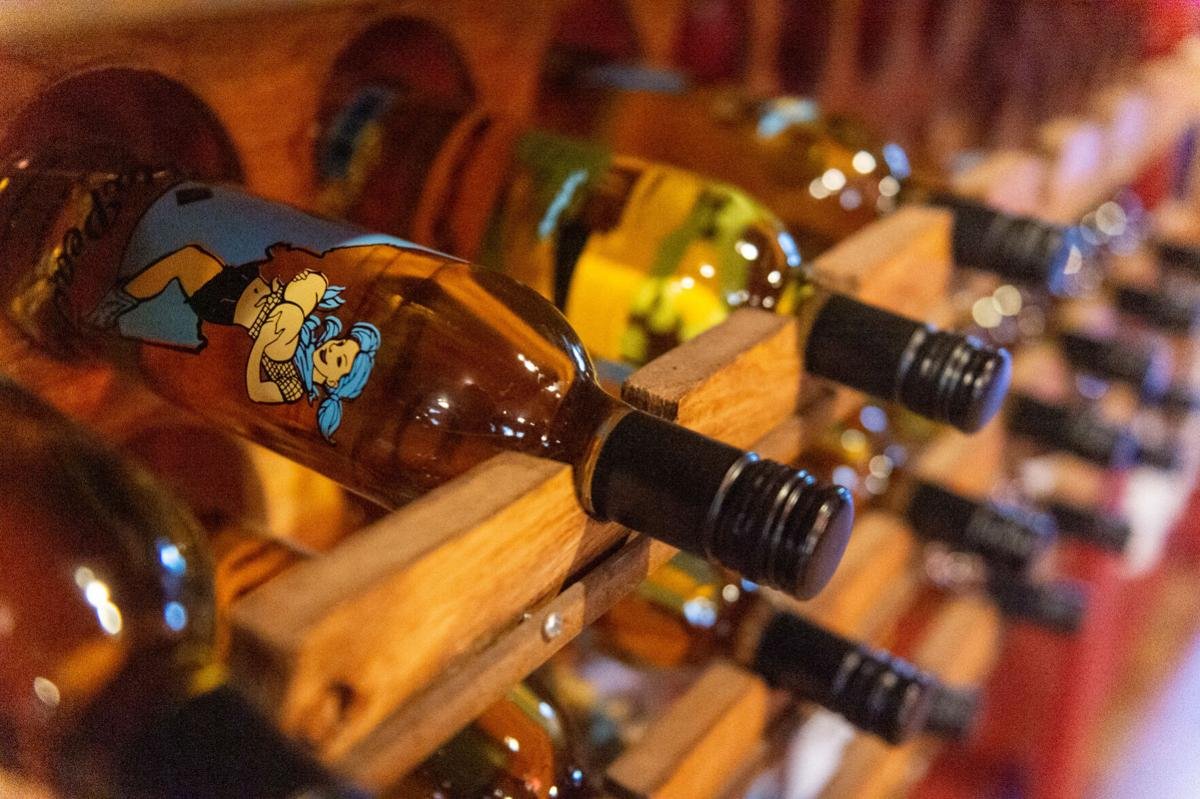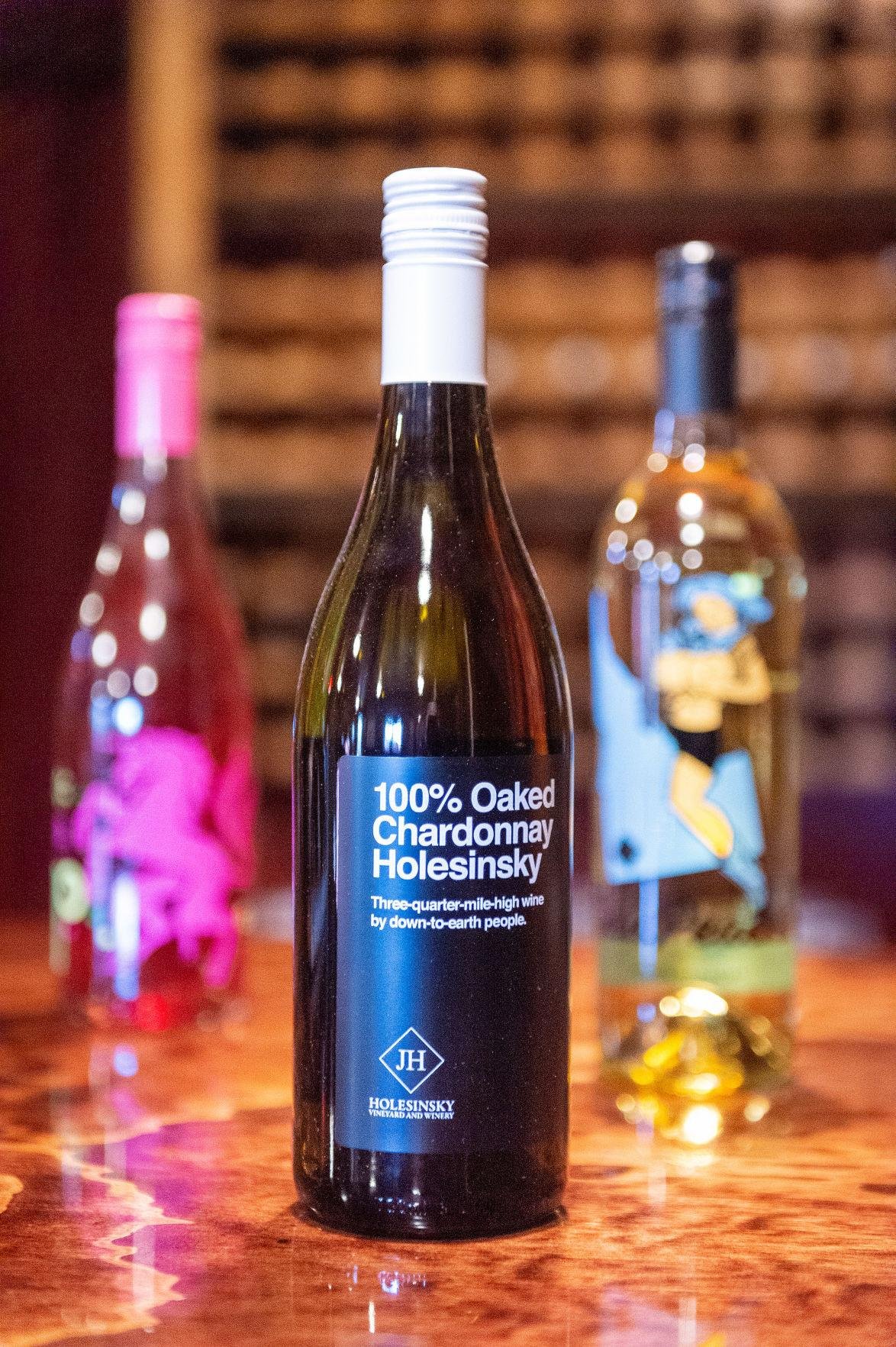Hotter summer means stronger wine flavors
TWIN FALLS — The 2021 Idaho wine harvest might taste a little different.
While wheat, barley and oat growers dealt with decreased yields and quality from record temperatures, wineries and vineyards saw a different outcome.
“We prepared for this. We knew that the year was going to be like this so we pruned differently,” said James Holesinky, who owns Holesinky Vineyard and Winery in Buhl with his wife, Caitlin.
This year’s grape harvest overall had slightly decreased yields, however, color and flavor were stronger due to the heat, said Moya Shatz Dolsby, executive director of the Idaho Wine Commission.
“When things get hot, it makes concentrated fruit flavors, but the berry size starts to shrivel,” Dolsby said.
Tonnage was down by about 25% across the state, she said.
Holesinky saw the opposite.
IdaPeach Sangria is seen Monday at Holesinsky Vineyard and Winery near Buhl.
Drew Nash, Times-News
Thanks to their advanced planning, the business saw three to four times the fruit.
To combat the heat, he did a light pruning and left more buds on the canes. If they had pruned more, there would have been fewer buds on the plant and the heat would have had a larger impact.
Pruning refers to cutting off canes—or branches—that could produce grapes. This is done to control growth and ensure consistency.
Halfway through the growing season, they thinned to select the most desirable buds.
“Our year was a little bit unique by the fact that we said, ‘You know what, we are not going to do what everyone else is doing. We are going to do it our own style officially this year,’” he said. “And it paid off.”
Their chardonnay crop had 12 tons per acre. Other vineyards saw yields closer to two tons per acre, he said.
Wine country is split into four regions in Idaho: northern, southwestern, southwestern urban and south-central. Each region has unique geography that requires different growing techniques.
Idaho’s wine industry is bigger than most people assume. In 2017, the industry was responsible for $209.6 million in economic impact. There are more than 70 wineries across the state, Dolsby said.
Grapevines thrive with cold, rainy winters and long warm summers. Temperatures over 95 degrees put additional stress on the plants this year.
Clumps of grapes that have been squeezed will eventually be used for feed and fertilizer at Holesinsky Vineyard and Winery near Buhl.
Drew Nash, Times-News
Typically, harvest starts the first week in September. This year, some growers started in the middle of August.
Holesinky harvested Sept. 16, about a week difference from what they did last year.
“The vine has a memory. How is that going to affect next year? That’s what I am curious about,” Dolsby said.
There isn’t a lot growers can do to combat hot temperatures.
“You can bring in fans. But when it gets up to 110 degrees, it’s really hard,” she said. “You are just stirring hot air around.”
Growers can also control damage with increased watering but even that has a limit.
Wineries in Idaho have a lot of local support, Dolsby said, and it makes a difference.
“I think it’s important that we support each other and continue to ask for Idaho wine when you are at a restaurant,” Dolsby said.
PHOTOS: Crop Science
Crop Science
IdaPeach Sangria is seen Monday at Holesinsky Vineyard and Winery near Buhl.
Drew Nash, Times-News
Crop Science
One of several wines in the tasting room, a 100% Oaked Chardonnay can be found at Holesinsky Vineyard and Winery near Buhl.
Drew Nash, Times-News
Crop Science
Owner James Holesinsky talks about how geography and climate can affect vineyards Monday at Holesinsky Vineyard and Winery near Buhl.
Drew Nash, Times-News
Crop Science
Clumps of grapes that have been squeezed will eventually be used for feed and fertilizer at Holesinsky Vineyard and Winery near Buhl.
Drew Nash, Times-News
Crop Science
Refrigerated wine containers are seen Monday at Holesinsky Vineyard and Winery near Buhl.
Drew Nash, Times-News
Crop Science
A stamped oak barrel seen Monday, Nov. 29, 2021, at Holesinsky Vineyard and Winery near Buhl.
Drew Nash, Times-News
Crop Science
Owner Caitlin Holesinsky listens to her husband, James, talk about their wine Monday at Holesinsky Vineyard and Winery near Buhl.
Drew Nash, Times-News
Crop Science
Caitlin Holesinsky pets their dog Billy during an interview Monday at Holesinsky Vineyard and Winery near Buhl.
Drew Nash, Times-News











